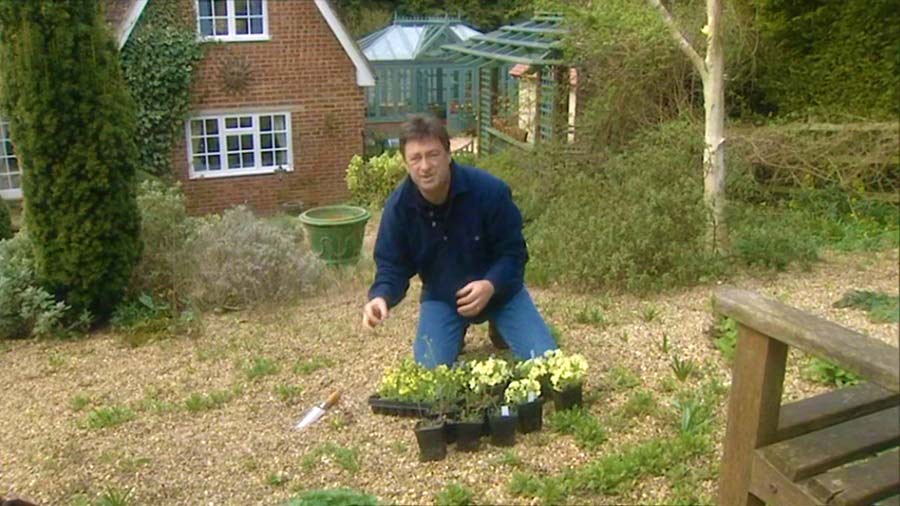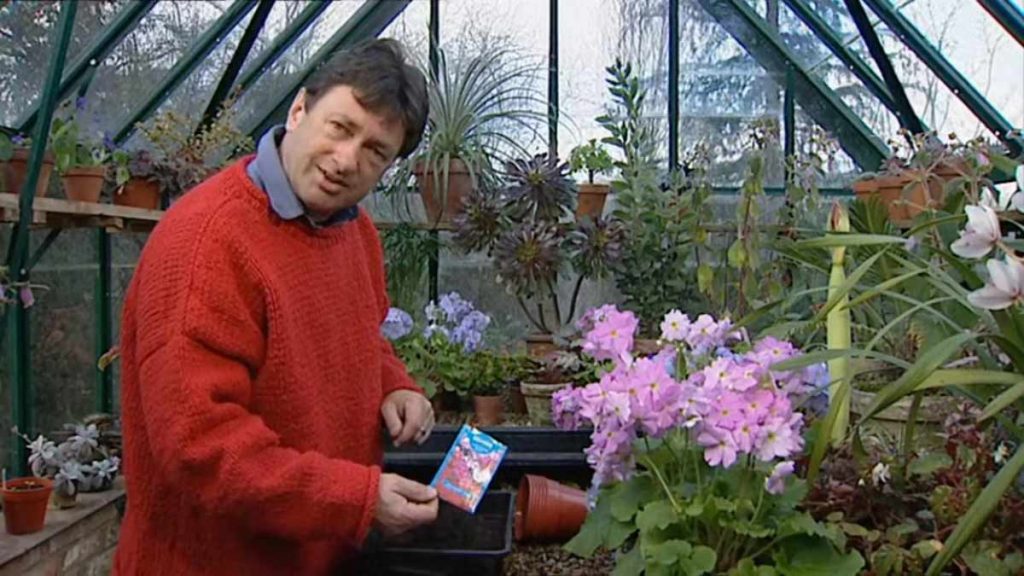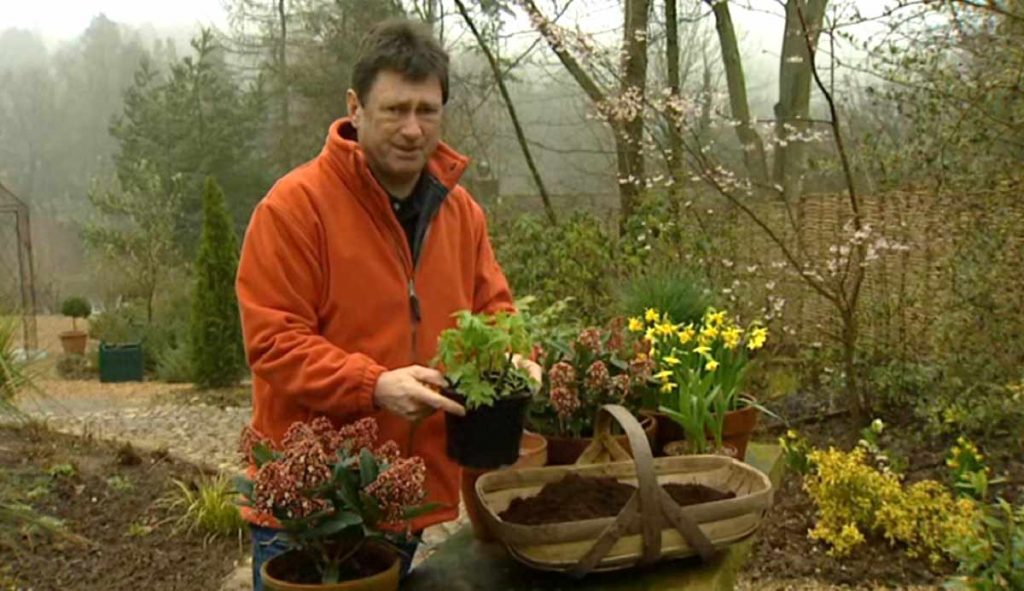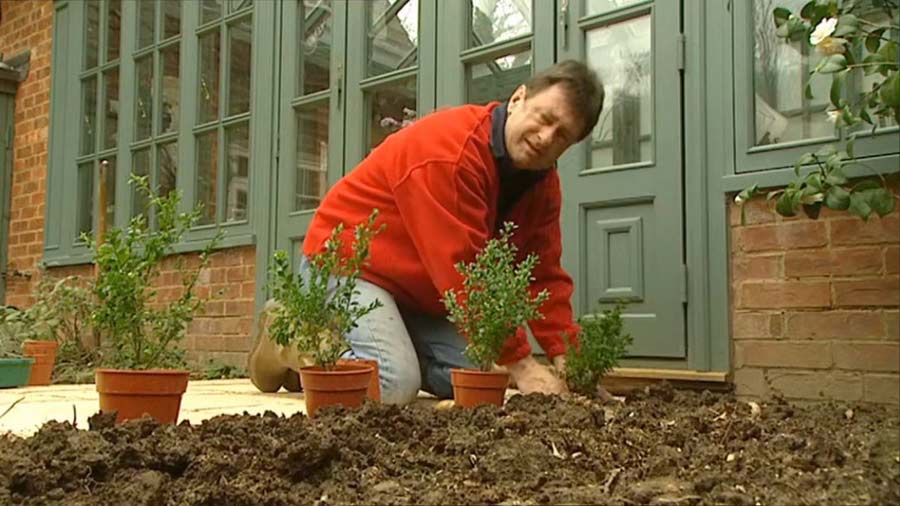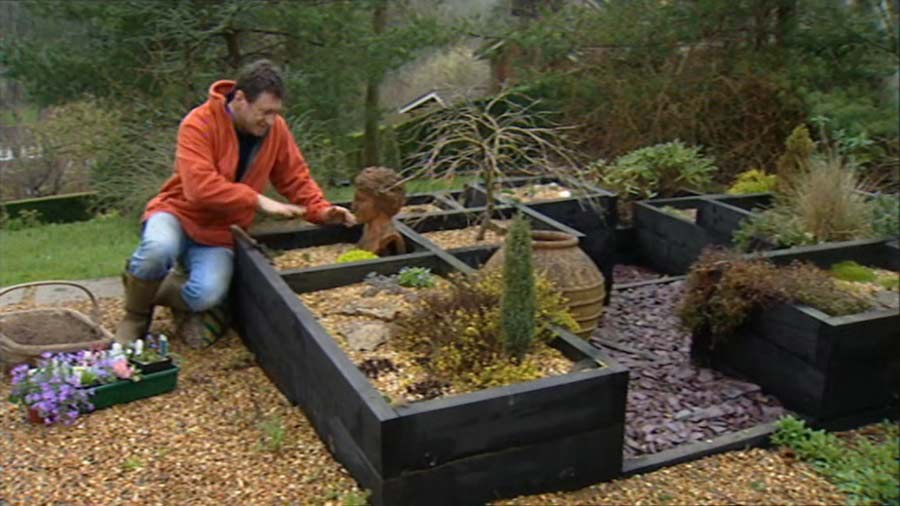Gardeners World episode 5 2002: Alan Titchmarsh, Rachel and Joe visit the garden center and share tips on what to buy before Easter.
Gardening show packed with good ideas, tips, advice from experts and timely reminders to get the most out of your garden, whatever its size or type.
Gardeners World episode 5 2002
Cut flowers: growing and selection
Many garden plants can be enjoyed as cut flowers and foliage in the home, offering cheaper and diverse alternatives to florist flowers. Borders can be adapted to provide cutting material throughout the year. Alternatively, dedicate a part of the garden to growing cut flowers.
When adapting existing borders, plant larger groups of annuals, perennials and bulbs suited for cutting to allow for picking without affecting the overall appearance of the border. Do not forget to incorporate a few well-chosen shrubs and grasses with interesting foliage. Use bulbs to extend the picking season.
If space allows, dedicate a part of the garden to growing just cut flowers. The advantage of a cutting garden over picking from borders is that it avoids depleting beds and borders, as well as providing a more productive planned area for the cut flower gardener.
Plant or sow in rows; this makes weeding, staking and picking so much easier. Take the final spread of plants into account and allow access between the rows. If planted too close together, plants will fall into each other, get tangled and may be damaged, making them less suitable for harvesting. As taller plants are often grown for cut flowers, robust supports are usually needed.
Primroses
Primula vulgaris, the common primrose, is a species of flowering plant in the family Primulaceae, native to western and southern Europe, northwest Africa, and parts of southwest Asia. The common name is primrose, or occasionally common primrose or English primrose to distinguish it from other Primula species also called primroses. None of these are closely related to the evening primroses (genus Oenothera).
Primula vulgaris is a perennial growing 10–30 cm (4–12 in) tall, with a basal rosette of leaves which are more-or-less evergreen in favoured habitats. It flowers in early spring in the northern hemisphere (February–April) on slopes and meadows.
The leaves are 5–25 cm long and 2–6 cm broad, often heavily wrinkled, with an irregularly crenate to dentate margin. The leaf blade is gradually attenuated towards the base and unevenly toothed. The single stem, extremely short, is hidden in the centre of the leaf rosette. The delicately scented flowers are 2–4 cm in diameter, borne singly on short slender stems.
The flowers are typically pale yellow, though white or pink forms are often seen in nature. Primroses are actinomorphic with a superior ovary which later forms a capsule opening by valves to release the small black seeds. The flowers are hermaphrodite but heterostylous; individual plants bear either pin flowers (longuistylous flower: with the capita of the style prominent) or thrum flowers (brevistylous flower: with the stamens prominent). Fertilisation can only take place between pin and thrum flowers. Pin-to-pin and thrum-to-thrum pollination is ineffective.
